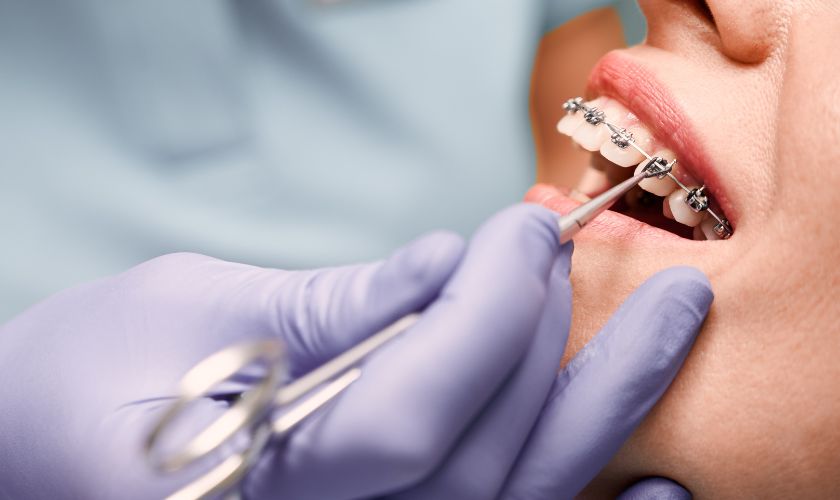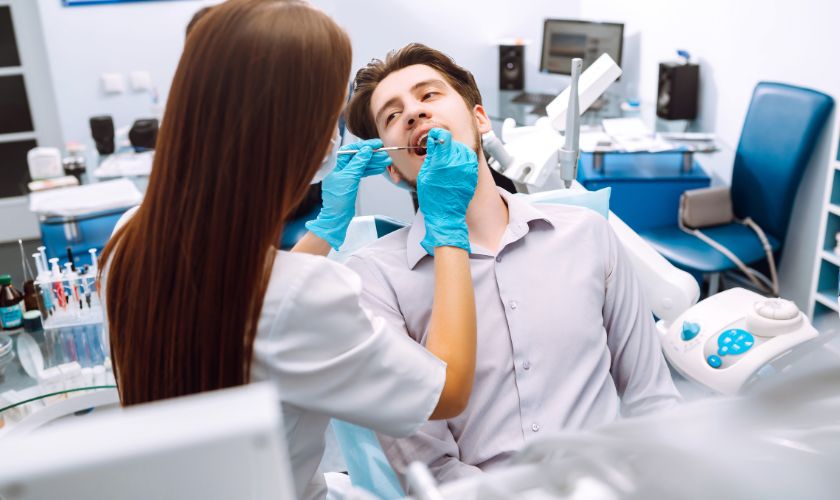The Role of an Orthodontist in Dental Health

The Role of an Orthodontist in Dental Health
Dental health is a critical component of overall well-being, and orthodontists play a pivotal role in ensuring the alignment and functionality of our teeth. Beyond the cosmetic aspects of a straight smile, orthodontists specialize in the diagnosis, prevention, and correction of dental and facial irregularities. In this article, we delve into the multifaceted role of orthodontists, exploring how their expertise goes beyond aesthetics to contribute significantly to optimal dental health.
Understanding Orthodontics
Orthodontics is a specialized branch of dentistry that focuses on the diagnosis, prevention, and treatment of dental and facial irregularities. These irregularities, often referred to as malocclusions, include issues such as misaligned teeth, overbites, underbites, and crowded or spaced-out teeth. Orthodontists are highly trained dental professionals who undergo additional education and clinical experience to specialize in the field.
The Diagnostic Process
One of the primary roles of an orthodontist in Lawrence is to diagnose malocclusions through a comprehensive assessment of a patient’s dental and facial structure. This process typically involves the use of X-rays, photographs, and digital scans to create a detailed picture of the patient’s oral condition. By understanding the specific nature of the misalignment, orthodontists can develop personalized treatment plans tailored to address each patient’s unique needs.
Prevention of Dental Issues
Orthodontists also play a crucial role in preventing potential dental issues from arising. Early intervention is a key aspect of orthodontic care, particularly for children. By assessing a child’s dental development at an early age, orthodontists can identify potential issues and implement preventive measures. This may involve the use of orthodontic appliances to guide the growth and alignment of teeth, reducing the likelihood of more severe problems in the future.
Treatment Options and Techniques
Orthodontists employ a variety of treatment options and techniques to correct dental irregularities. Traditional braces, which consist of brackets and wires, are one of the most common methods used to gradually move teeth into their proper positions. In recent years, technological advancements have introduced alternatives such as clear aligners, which offer a more discreet and flexible option for patients seeking orthodontic treatment.
Traditional Braces
Traditional braces remain a highly effective and widely used orthodontic treatment. The braces apply constant pressure on the teeth, gradually guiding them into the desired alignment. Modern braces are more comfortable and aesthetically pleasing than their predecessors, making them a popular choice for patients of all ages.
Clear Aligners
Clear aligners, such as Invisalign, have gained popularity for their ability to straighten teeth without the need for visible brackets and wires. These custom-made, removable trays are nearly invisible, offering a more discreet option for individuals who may be self-conscious about wearing braces. Clear aligners are also convenient as they can be removed for eating, brushing, and flossing.
Addressing Functional Issues
Beyond the cosmetic benefits of a straight smile, orthodontists address functional issues that can impact oral health. Malocclusions, if left untreated, can lead to problems such as difficulty chewing, speaking, and maintaining proper oral hygiene. By correcting these issues, orthodontists in Lawrence contribute to the overall well-being of their patients and help prevent potential long-term dental problems.
Enhancing Facial Aesthetics
While the functional aspects of orthodontic care are paramount, the aesthetic improvements achieved through orthodontic treatment should not be overlooked. A straight and properly aligned smile can significantly enhance facial aesthetics, boosting an individual’s confidence and self-esteem. Orthodontists consider both the functional and cosmetic aspects of treatment to provide comprehensive care that improves not only oral health but also overall quality of life.
Collaborative Approach with General Dentists
Orthodontists in Lawrence often work in collaboration with general dentists Lawrence to ensure comprehensive dental care for patients. Regular check-ups with a general dentist are essential for maintaining oral health through preventive measures, cleanings, and addressing other dental issues. Orthodontists and general dentists communicate to coordinate care and provide a holistic approach to a patient’s dental well-being.
Post-Treatment Care
Once orthodontic treatment is complete, orthodontists in Lawrence play a crucial role in post-treatment care to maintain the results achieved. This may involve the use of retainers, which help prevent teeth from shifting back to their original positions. Regular follow-up appointments allow orthodontists to monitor the stability of the results and address any concerns that may arise.
In conclusion, the role of an orthodontist in dental health extends far beyond creating aesthetically pleasing smiles. Orthodontists are dedicated to diagnosing, preventing, and correcting dental and facial irregularities to improve both the function and appearance of the teeth. Through a combination of diagnostic expertise, advanced treatment options, and a collaborative approach with general dentists, orthodontists contribute significantly to the overall oral health and well-being of their patients. If you are considering orthodontic treatment, consulting with a qualified orthodontist is the first step toward achieving a healthy, functional, and confident smile.





